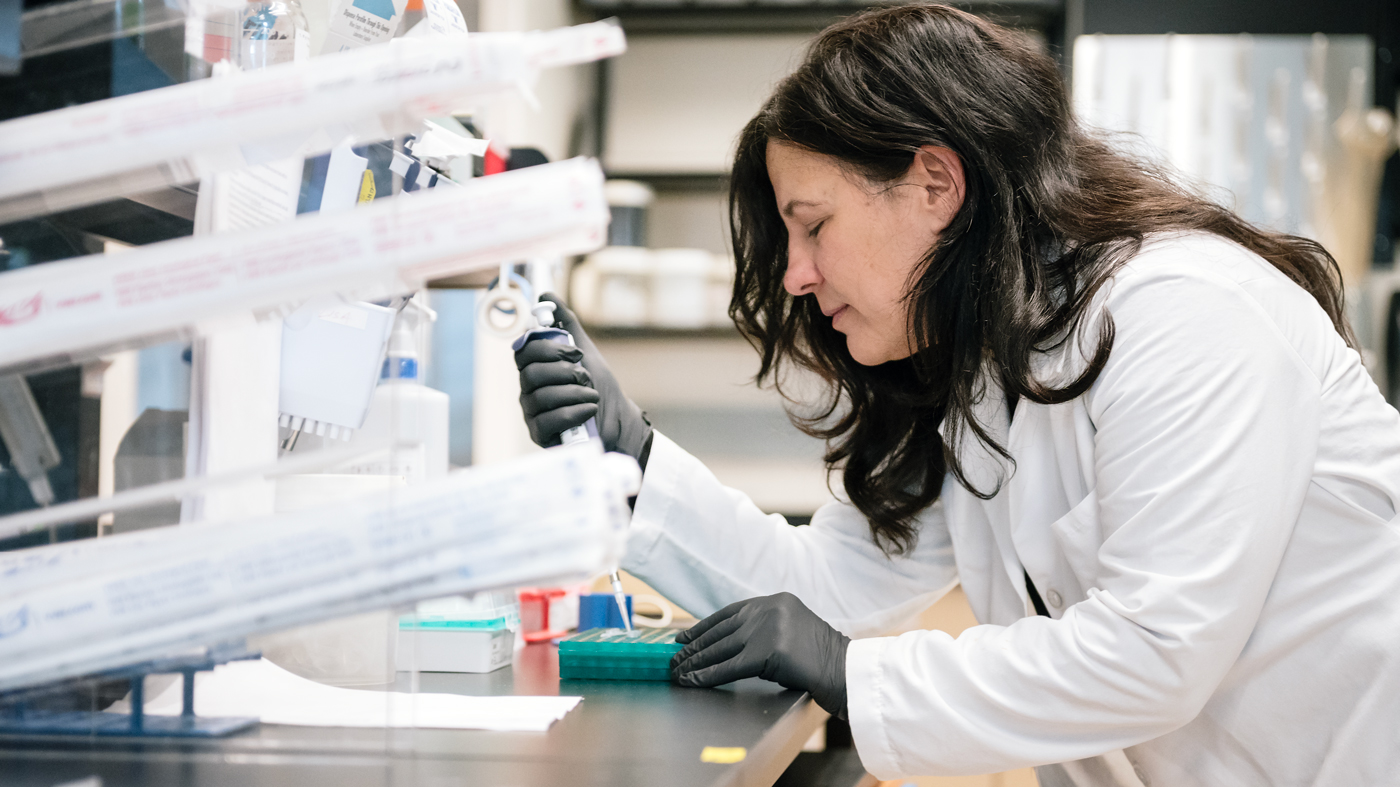Lisa Elia, PhD, investigates the cellular mechanisms that underlie neurodegeneration. Using both rodent cell models and human patient induced pluripotent stem cells (iPSCs), she is searching for therapeutic targets for currently incurable conditions such as frontotemporal dementia, amyotrophic lateral sclerosis (ALS), Parkinson’s disease, and Alzheimer’s disease. By combining cell models with innovative microscopy techniques and artificial intelligence, her work has identified critical pathways involved in normal neuronal aging, and established platforms that can be used to screen for new therapies for neurodegenerative disease.
Disease Areas
Areas of Expertise

Lab Focus
Research Impact
Elia’s research is focused on discovering the cellular mechanisms that underlie normal neuronal aging, as well as those that give rise to neurodegenerative disease. By combining rodent and human patient cell-based models with fluorescent biosensors, high-content imaging, and artificial intelligence, her work has helped reveal critical roles of the cellular proteostasis network, specifically the autophagy-lysosome pathway and neuroinflammation, in neuronal health and disease. Using small molecule and genetic screens, she has identified novel modulators of these pathways and potential therapeutic candidates for currently incurable diseases, including frontotemporal dementia and Parkinson’s disease.
Professional Titles
Scientific Program Leader III/Research Investigator, Gladstone Institutes
Bio
Lisa Elia, PhD, is a research investigator at Gladstone Institutes. She joined Gladstone in 2009 as a scientific program leader in the Center for Systems and Therapeutics. Previously, she worked in the pharmaceutical industry investigating potential therapeutic targets for multiple sclerosis. She earned her PhD in cell biology from the Albert Einstein College of Medicine.
Elia’s research is focused on identifying therapeutic targets for neurodegenerative diseases that are currently incurable, including Parkinson’s disease and frontotemporal dementia. By coupling human and rodent cell-based models of such conditions with high-content imaging and artificial intelligence-powered analysis, she has helped identify patterns that distinguish diseased cells from healthy ones, and elucidate the key pathological mechanisms driving disease. By partnering with other leaders in academia and industry, she is working to translate these advances into the development of new therapies. In addition, her group is investigating mechanisms of normal aging in neurons and microglia, which are the resident immune cells of the central nervous system.
Publications
An mTOR-independent macroautophagy activator ameliorates tauopathy and prionopathy neurodegeneration phenotypes.
Yoon L, Botham RC, Verhelle A, Wu Y, Cole CM, Tan EP, Massey LA, Sanz-Martinez P, Chou C-C, Xu J, Elia LP, Lee K, Labra SR, Kline GM, Xiao Q, Rhoades D, Cano-Franco S, Cuoco CA, Ta A, Ren W, Hou WC, Wulkop-Gil C, Ibrahim LH, Nutsch K, Ko Y, Lederberg OL, Peng H, Jiang S, Lipton SA, Bollong MJ, Hansen M, Finkbeiner S, Finley D, Prado MA, Petrassi HM, Dikic I, Reggiori F, Garza D, Wiseman RL, Powers ET, Frydman J, Haggarty SJ, Johnson KA, Silva MC, Stolz A, Encalada SE, Kelly JW. bioRxiv [Preprint]. November 21, 2023.
A comprehensive enumeration of the human proteostasis network. 2. Components of the autophagy-lysosome pathway.
Elsasser S, Elia LP, Morimoto RI, Powers ET, Elsasser S, Finley D, Costa B, Budron M, Tokuno Z, Wang S, Iyer RG, Barth B, Mockler E, Finkbeiner S, Gestwicki JE, Richardson RAK, Stoeger T, Morimoto RI, Tan EP, Xiao Q, Cole CM, Massey LEA, Garza D, Powers ET, Kelly JW, Rainbolt TK, Chou CC, Masto VB, Frydman J, Nixon RA. bioRxiv [Preprint]. March 24, 2023.
Frontotemporal dementia patient neurons with progranulin deficiency display protein dyshomeostasis.
Elia L, Barth B, Alijagic A, Buselli C, Wong L, Morrison G, Prado M, Paulo JA, Gygi SP, Finley D, Finkbeiner S. bioRxiv [Preprint]. January 23, 2023.
Approaches to develop therapeutics to treat frontotemporal dementia.
Elia LP, Reisine T, Alijagic A, Finkbeiner S. Neuropharmacology. 2020 Apr; 166:107948.
Genetic regulation of neuronal progranulin reveals a critical role for the autophagy-lysosome pathway. Elia LP, Mason AR, Alijagic A, Finkbeiner S. J Neurosci. 2019 Apr 24;39(17):3332-3344.
The receptor-interacting serine/threonine protein kinase (RIPK1) regulates progranulin levels. Mason AR, Elia LP, Finkbeiner S. J Biol Chem. 2017 Feb 24;292(8):3262-3272
Progranulin protects against amyloid β deposition and toxicity in Alzheimer's disease mouse models. Minami SS, Min SW, Krabbe G, Zhou Y, Asgarov R, Herl-Martens L, Elia LP, Ward M, Farese RV Jr., Gan L. Nat Med. 2014 Oct; 20(10):1157-64.
High-throughput RNA interference as a tool for discovery in neuroscience. Elia LP and Finkbeiner S. OMICs in Neurology and Neuroscience. Eds., Oxford University Press. 2012; Vol. pp. 114–131.
Synapses are regulated by the cytoplasmic tyrosine kinase Fer in a pathway mediated by p120catenin, Fer, SHP-2, and β-catenin. Lee SH, Peng IF, Ng S, Yanagisawa M, Bamji SX, Elia L, Balsamo J, Lilien J, Anastasiadis PS, Ullian E, Reichardt LF. J Cell Biol. 2008 Dec 1; 183(5): 893–908.
p120 catenin regulates dendritic spine and synapse development through Rho-family GTPases and cadherins. Elia LP, Yamamoto M, Zang K, Reichardt LF. Neuron. 2006 Jul 6; 51(1): 43–56.
A role for a protease in morphogenic responses during yeast cell fusion. Elia L, Marsh L. J Cell Biol. 1998 Sep 21; 142(6): 1473–1485.
Contact
Lisa Elia
Email
415.570.1456

